Theme Essay by Marina Budhos and Marc Aronson
How to Write YA Nonfiction that Doesn’t Bore Kids
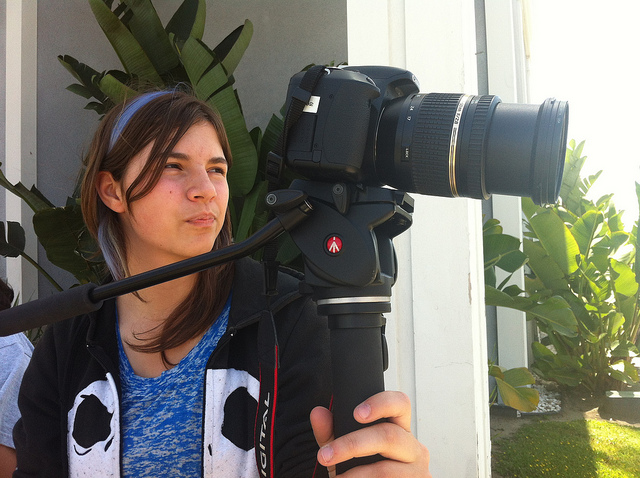
We know you remember it: the dusty stuff you checked out of the library to finish book reports. Tired biographies of Abraham Lincoln or Willie Mays. Potted histories of the American Revolution, say, or the discovery of electricity.
Yet in the past fifteen years, there's been a quiet revolution going on in writing nonfiction for kids. Many of the literary techniques from the adult world of narrative nonfiction have made their way into books for teens and younger children, including unusual takes on familiar history and memoir. Surprising as it may seem to adult readers, it's a great time to be a YA nonfiction writer—as long as you shake off a few old-fashioned attitudes about what's "good" for kids.
Consider two very different recent examples. Tanya Lee Stone's Almost Astronauts: 13 Women Who Dared to Dream (Candlewick, 2009) covers women who trained under the guidance of a NASA doctor during the heyday of the U.S. space program. They had all the skill to become astronauts but were missing one key element of the "Right Stuff": they weren’t male. Animated by Stone’s passion to tell this unknown story, her book includes original research, commentary on women's roles in the early 1960s, and an innovative design that "blasts off" from black-and-white to color in 1983 when American women—led by Sally Ride—were finally allowed to fly in space.
Second, there’s Steve Sheinkin's Bomb: The Race to Build and Steal the Atomic Bomb (Flashpoint, 2012), which uses all the cliff-hanging narrative techniques of a spy thriller to capture a global story of stealth, science, espionage, and war. Here’s Sheinkin's opening hook (“Prologue: May 22, 1950”):
He had a few more minutes to destroy seventeen years of evidence.
Still in his pajamas, Harry Gold raced around his cluttered bedroom, pulling out desk drawers, tossing boxes out of the closet, and yanking books from the shelves. He was horrified. Everywhere he looked were incriminating papers—a plane ticket stub, a secret report, a letter from a fellow spy.
This is not your mother’s—or even your own—childhood nonfiction. Like the whole field of young adult literature, YA nonfiction has blossomed. Young adult authors like ourselves can’t help feeling excited about all the new avenues open to writers. But before we look at what’s aborning today, we want to clear away some misconceptions.
We've written YA nonfiction together (we also happen to be married), but both of us came to the field through different routes. When Marc was a young boy, his parents were concerned that he was behind on reading and hired a tutor. What they discovered is that Marc wasn’t behind; he just wasn’t interested in early reader books of the Dick and Jane model. It was only when he read a biography of George Washington that he realized what reading could be: a journey of discovery into a topic he was passionate about.
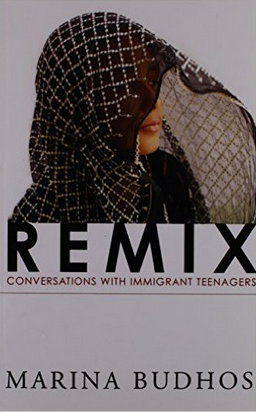 This love of nonfiction carried Marc all through childhood to adulthood, when he chanced on a want ad in the mid-1980s for an editor to revamp the venerable Lippencott "Land and People" series. Having read all the books as a teen (titles like The Land and People of South Africa) he made his pitch, got the job, and was soon launched into a career as an editor of children’s and young adult books, with an emphasis on nonfiction. Eventually, Marc came to write his own young adult nonfiction about everything from Stonehenge to Race: A History Beyond Black and White (Atheneum, 2007).
This love of nonfiction carried Marc all through childhood to adulthood, when he chanced on a want ad in the mid-1980s for an editor to revamp the venerable Lippencott "Land and People" series. Having read all the books as a teen (titles like The Land and People of South Africa) he made his pitch, got the job, and was soon launched into a career as an editor of children’s and young adult books, with an emphasis on nonfiction. Eventually, Marc came to write his own young adult nonfiction about everything from Stonehenge to Race: A History Beyond Black and White (Atheneum, 2007).
Originally a novelist and journalist, Marina began dipping her toes into YA nonfiction waters with her book Remix: Conversations with Immigrant Teenagers (Holt, 2007). A series of profiles of immigrant teenagers, Remix was a chance for Marina to meld her interests as a journalist—listening, observing, noticing the intimate details—with the bigger story of immigration. It also allowed her to mix it up in the YA world, showing that there’s a wide range of what it means to be a teenager.
Neither of us became YA nonfiction authors through the traditional field of educational publishing. But many readers and writers still associate the genre with textbooks—resources that are meant to deliver lessons. Textbooks are deliberately free of voice, opinion, verve, risk, lyricism, and adventure—and their calling card is a kind of bland, distanced, didactic precision and authority. Every term is glossed, every assertion well supported by the general taste of powers-that-be in education.
So, let’s clear up the first misconception right away: Textbooks are not books. They are information-delivery vehicles. Indeed, they can be quite good at mapping subject matter to a sequence of lesson plans that fit neatly within a semester or school year. But that’s a device, not a book. A book of scales is not a concerto.
The second mistake writers often make is to assume all nonfiction books for young people need to be objective. Such writers may have a general sense that there’s nonfiction beyond textbooks, but they’re still intimidated by the idea that information has to be related in an impartial fashion. According to this premise, a nonfiction author is supposed to be a fine researcher who imparts what he or she has discovered while getting entirely out of the way—that is, the author is merely a conveyor belt for gilt-edged, certified data.
Now, lurking in the conveyor-belt image is an important insight: Many readers, especially elementary school kids and adults, love pure data. From the sports stat nerd to gaming-card enthusiasts to fantasy sports players, there’s a world of readers who like texts because they are not narrative and have no story and no personal voice. Those readers crave data points: fastest, slowest, largest, smallest, best, worst.
But then there’s everyone else who likes real-life stories, especially teen readers who are focused on social dynamics and identity rather than data. Here’s where it gets interesting, because adult nonfiction has undergone a revolution as well. Where once the genre favored the doorstopper—the definitive study or long-awaited memoir that was meant to claim a subject for its academic author—the field has been colonized by books whose subject is driven by narrative force rather than density of research.
Readers are looking to see if the author can catch their attention in the opening incident. With perhaps the exception of the founding fathers, the Civil War, World War II, or the latest diet, adult nonfiction is not sold by fitting a category that readers know they’ll want. It’s sold by taking them on an unexpected journey into a time, place, or topic. Mark Kurlansky’s Cod: A Biography of the Fish that Changed the World is one award-winning example from the 1990s; Dava Sobel’s Longitude is another.
Narrative and first-person approaches to nonfiction have now filtered into books for younger readers. This is a crucial shift. Today’s kids don’t just read nonfiction books because they have to or because they all like sports, fashion, and celebrities. They read nonfiction because it engages them and has been crafted from opening page through ongoing pace with the use of foreshadowing, highlighting, and cliff-hanging. In other words, they read nonfiction books because they’re well-written.
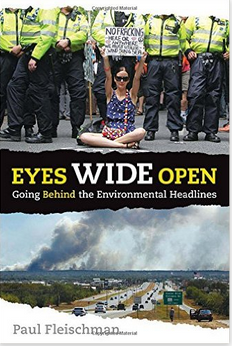 Authors, do you see that magic door open? Your skill is what’s needed. And one more thing: your own passion and curiosity.
Authors, do you see that magic door open? Your skill is what’s needed. And one more thing: your own passion and curiosity.
The old, bland objectivity was a function of a time when a parent, teacher, or editor might say—often did say—“What if this is the only book a child ever reads on this subject? You better be careful what you write.” Today, even if it may well be the only book a child has read on a topic, other information and points of view are a click away. As long as a book is fair-minded and gives readers an easy path to finding other perspectives, it has taken care of its obligations to “coverage.” Now, the author can use voice, emotion, and personal commitment to make a case—to explore a point of view.
Take Paul Fleischman, who’s best known as a fiction writer for middle-grade students—his Seedfolks (HarperCollins, 1997) has often been used as the single book for a city read—and as an author of picture books. But in his 2014 Candlewick title Eyes Wide Open: Going Behind the Environmental Headlines (which Marc edited), he crafted nonfiction for teenagers that’s far more than a list of “Fifty Ways to Save the Planet.” Fleischman explores why we don’t notice the environmental devastation all around us—from our own psychological defense mechanisms to the tactics of groups determined to distract us from the crisis we face. As he writes in his first chapter:
The more I researched, the more I realized that science is only part of the environmental story. Money turns out to be as important as molecules. Science explains what nature is doing; money explains what we’re doing. Power and politics are bound up with money.
While he gives readers access to opposing views, this is an uncompromising cri de coeur that aims to shock, challenge, and awaken teenagers exactly as an author might do in a parallel adult text like An Inconvenient Truth (which has been published in a YA version as well).
Such opinionated narratives prompt a third misconception that frequently comes up about writing nonfiction for young adults: If a book is for kids, shouldn’t authors censor themselves or avoid certain hot-button topics?
Our answer is mostly no. These days, teenagers are awash in information. No matter where they live and how restrictive their home, school, or community is, in their digital space it’s hard to escape sexuality, violence, and all sorts of disturbing issues and images. Cordoning off nonfiction in a “children’s only” area won’t protect them. Instead, our role as writers is to guide young adults through this bewildering sea of information into narratives and ideas that excite them. It’s to help them make sense of the past, present, and future.
Given this cultural shift, there’s no longer the pressure to write heroic biographies. In fact, teenagers are more drawn to reading about flawed figures who weren’t always good or noble. That’s no surprise; this is exactly the territory teens themselves are experiencing and exploring. In his own work, Marc has taken on the swashbuckling but self-destructive figure of Sir Walter Raleigh and the conflicted psyche of Robert Kennedy. YA nonfiction author Elizabeth Partridge has written about John Lennon and Woody Guthrie, both of whom were musical heroes with complicated personal lives.
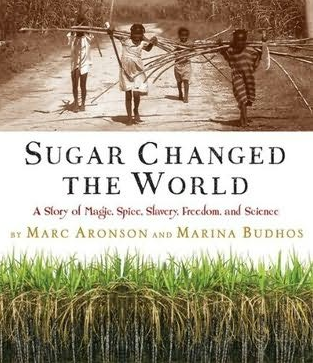 There are limits, of course. When we were writing Sugar Changed the World (Clarion, 2010), we drew on the diaries of a plantation overseer, Thomas Thistlewood, who recorded the torture of his slaves and the rape of over a hundred black women. We suggested this savagery and acknowledged the rapes without lingering on details. We felt that too much violence would overwhelm the book and stop the reader cold. There was no need for vivid description. Yet, we did need to give young readers a sense of the real price, the real horror, of enslavement. And given that popular novels and films for teenagers—not to mention news headlines—explore physical and sexual violence, we were hardly out of bounds.
There are limits, of course. When we were writing Sugar Changed the World (Clarion, 2010), we drew on the diaries of a plantation overseer, Thomas Thistlewood, who recorded the torture of his slaves and the rape of over a hundred black women. We suggested this savagery and acknowledged the rapes without lingering on details. We felt that too much violence would overwhelm the book and stop the reader cold. There was no need for vivid description. Yet, we did need to give young readers a sense of the real price, the real horror, of enslavement. And given that popular novels and films for teenagers—not to mention news headlines—explore physical and sexual violence, we were hardly out of bounds.
Each author must rely on his or her own sense of what to include in a particular nonfiction book. But a good rule of thumb is to keep in mind what matters to a young person—and what larger issues are at stake in the book. The question is not how to avoid adult censorship, but rather how best to honor the central requirement of connecting with your young adult reader.
That’s why pace is so crucial in YA writing. This is especially true when it comes to how much research to include. When writing for adult audiences, nonfiction authors often feel responsible for covering the entire territory of their subject. While YA authors must be just as rigorous in their research and use of sources, they have to make choices to get to the essence of the topic. Authors of adult nonfiction could follow the same advice; readers of all ages like to get to the point quickly. But whether it’s just the distraction of growing up or the fast pace of these digital times, young adults have a definite need for momentum.
You can’t assume that teenagers are interested in what you have to say—it’s your job to pull them in by intriguing, delighting, and surprising them. As a writer, the most important questions to ask yourself are: What’s at stake for me? What excites me about this subject? Because the more you bring your personal passion to the process of writing for teenagers, the more they, as readers, will feel your excitement.
Art Information
- "Teen Producers Project—Speak City Heights, Spring 2012" © © Media Arts Center San Diego; Creative Commons license.
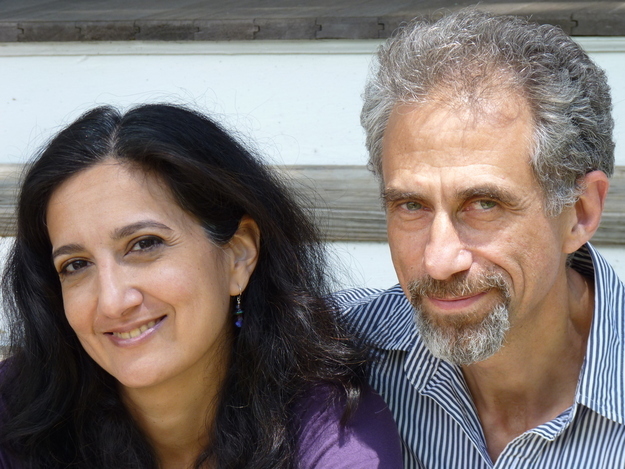 Marina Budhos and Marc Aronson wrote Sugar Changed the World: A Story of Magic, Spice, Slavery, Freedom, and Science, a 2010 Los Angeles Times Book Award finalist and a finalist for the YALSA award for Excellence in Nonfiction. They’ve also coauthored The Eyes of the World: Robert Capa and Gerda Taro and the Invention of Modern Photojournalism (Holt), which will be published in 2017. They've been married for almost twenty years.
Marina Budhos and Marc Aronson wrote Sugar Changed the World: A Story of Magic, Spice, Slavery, Freedom, and Science, a 2010 Los Angeles Times Book Award finalist and a finalist for the YALSA award for Excellence in Nonfiction. They’ve also coauthored The Eyes of the World: Robert Capa and Gerda Taro and the Invention of Modern Photojournalism (Holt), which will be published in 2017. They've been married for almost twenty years.
Marina Budhos is an author of award-winning fiction and nonfiction for both adults and young adults. Her forthcoming book Watched (Wendy Lamb/Random House) is a follow-up to her 2006 YA novel Ask Me No Questions, about surveillance of Muslim communities in the post 9/11 era. Her most recent young adult novel, Tell Us We’re Home (Atheneum, 2010), was praised by the New York Times as "elevated by writing that is intelligent and earnestly passionate." Her short stories, articles, essays, and book reviews have appeared in publications such as the Awl, Kenyon Review, Ploughshares, Nation, Dissent, Marie Claire, Redbook, Ms., and Los Angeles Times, as well as in numerous anthologies.
Marc Aronson earned his doctorate in cultural history at NYU while working as a children’s book editor. He’s won many awards for his editing and writing, including the American Library Association’s first ever medal for excellence in nonfiction writing for readers through eighth grade. He is now a professor in the Rutgers School of Communication and Information, where he trains librarians to share books with children and teenagers, while he continues to write nonfiction for those same ages. Marc writes a monthly column in School Library Journal entitled “Consider the Source.”
